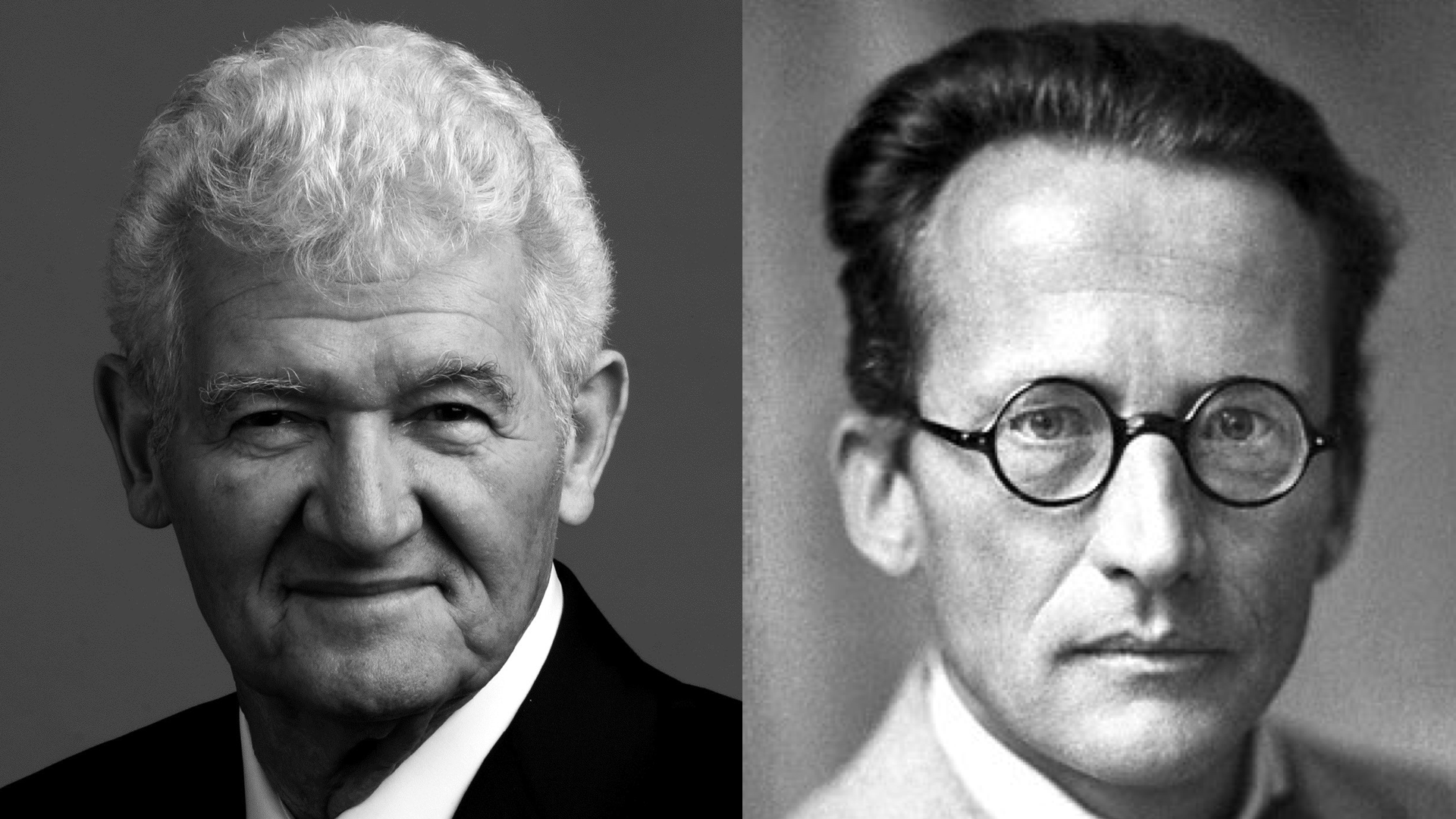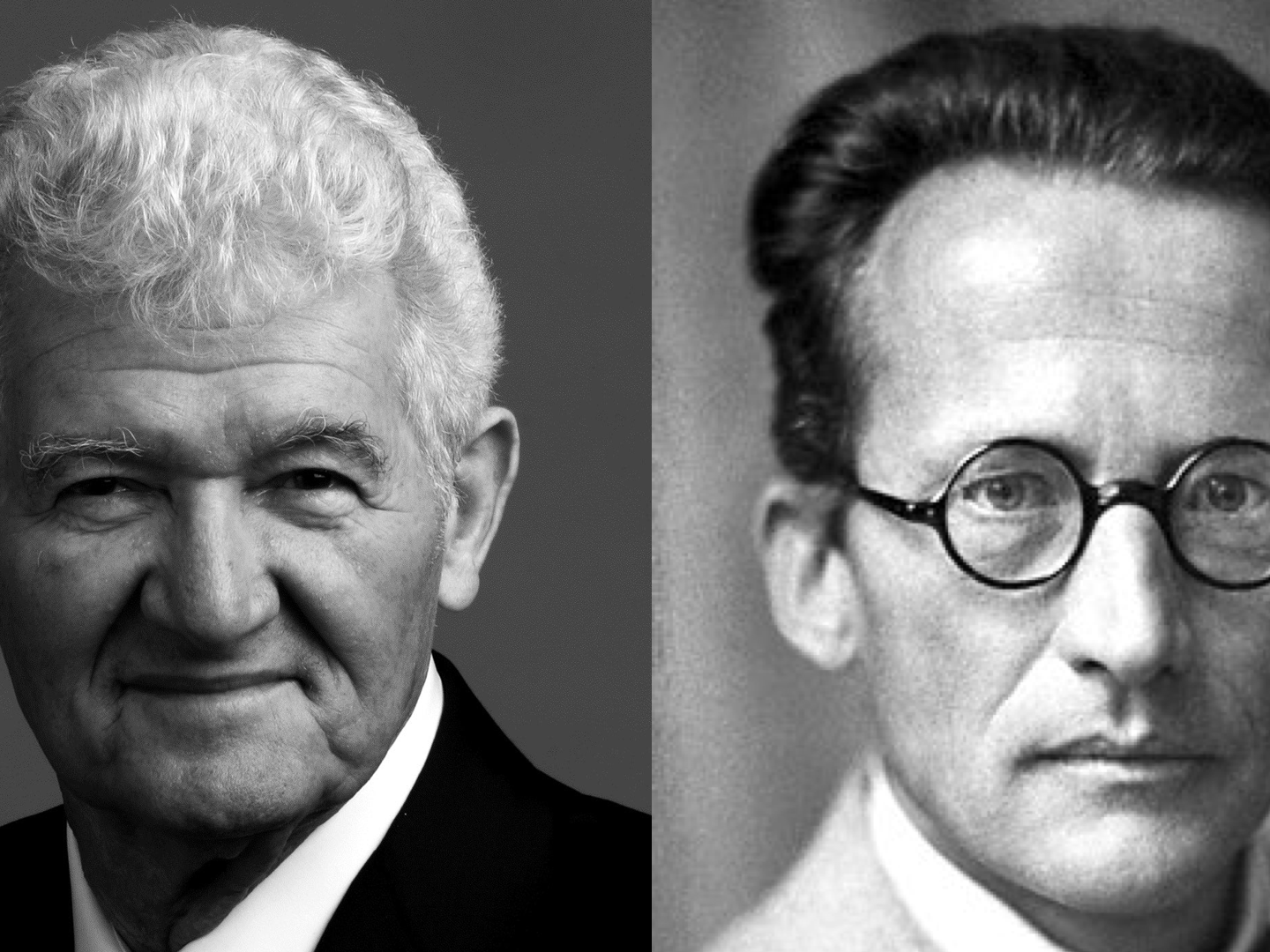The strong ring
The strong ring generated by simplicial complexes produces a category of geometric objects which carries a ring structure. Each element in the strong ring is a “geometric space” carrying cohomology (simplicial, and more general interaction cohomologies) and has nice spectral properties (like McKean Singer) and a “counting calculus” in which Euler characteristic is the most natural functional. Unlike the class of simplicial complexes or the class of discrete CW complexes or Stanley-Raiser ring elements, this ring combines the property that it is a “Cartesian closed category” and that the arithmetic is compatible with cohomology and spectra of connection Laplacians L of G. The strong ring is isomorphic to a subring of the strong Sabidussi ring via the ring homomorphism attaching to a complex its signed connection graph. Like the Stanley-Reisner ring, also the full Sabidussi ring on the category of all finite simple graphs is too large. The strong ring solves the problem to define a category of finite geometries which is Cartesian closed, has a ring arithmetic, compatibility with cohomology (Kuenneth) and a finite potential theory (energy theorem) and spectral compatibility in the sense that multiplication leads to products of spectra and tensor products of connection Laplacians. Each of the two Laplacians also carries nonlinear discrete partial differential equations (PDE’s). The first one is a Lax pair and integrable, the eigenvalues of the Dirac operator being the integrals. For the second, the Helmhotz system, we suspect integrability as it looks like a nonlinear Schrödinger equation. In the first case, the description is given in the Heisenberg picture, deforming the operators. In the second case, the discrete PDE will deform states of the Hilbert space. Of course both can be seen in the Schroedinger or Heisenberg picture. We have implemented both dynamical systems on the computer, but still require to do more experiments. Interesting would be to study how both play together. We hope of course to see soliton like solutions (nonlinear systems are nicer in explaining particle structures and featuring particles with different speeds).
Remarks and reiterations of points made elsewhere:
- The full Stanley-Reisner ring is a ring, but it is too large. Its elements somehow behave like measurable sets and do not carry cohomology nor an Euler caracteristic compatible with cohomology and homotopy. It contains for example elements like f=xy which is an “edge without vertices”, we want elements like f=xy+x+y which is the graph K2. The Euler characteristic of f=xy is -1. There is no Euler-Poincare formula which links this to cohomology. Discrete CW complexes are natural, carry cohomology but forming products is problematic. Its the strong ring generated by products of simplicial complexes which works nicely. It is a finite structure resembling the concpt of compactly generated Hausdorff space in classical topology. Having algebraic structures associated to geometric objects is the heart of algebraic topology. But the point of view here is not to attach an algebraic object like a ring to a geometric object but to see a geometric object as an element in an algebraic one, here a ring. We “calculate WITH spaces”. The category of geometries is an algebraic object. This arithmetic generalizes the usual arithmetic, which is the special case if the geometric objects are zero dimensional (like pebbles used by the earlierst mathematicians in pre-Babylonian time). In the strong ring, primes are either zero dimensional classical rational primes or then elements in the ring which are simplicial complexes. Some of them might decay in the full Sabidussi ring of all graphs, which is a natural “ring extension” of the strong ring.
- While we have compatibility with cohomology on the entire space of graphs (which as usual are seen as simplicial Whitney complexes and not just one-dimensional skeletons to which classical graph theory reduces them), the corresponding Cartesian product is not associative, as multiplying with
is the Barycentric refinement.
- Graphs with the weak Cartesian product form a Cartesian closed category too, but this assumes to see graphs as one-dimensional simplicial complexes, which is a point of view from the last century. Graphs have much more structure as they can be equipped with more interesting simplicial complex structures, in particularly the canonical Whitney complex for which the discrete topological results are identical to the continuum. As pointed out at various places, we like graphs for their intuitive appeal, because they are hard wired into computer algebra systems and because after one Barycentric refinement, one always deals with Whitney complexes. The language of abstract simplicial complexes is equally suited but much less intuitive as one can not visualize them nicely unless they are Whitney complexes of graphs.
- The connection graph G’ is in general not homotopic to G, but only homotopic to G1, the Barycentric refinement of G. Also the Barycentric refinement G1 of a ring element G, is the Whitney complex of a graph. The dimension of the connection graph G’ is larger in general but
and
are homotopic.
- In some sense the strong ring produces a purely geometric quantum field theory where the individual simplicial complexes are elementary particles as they are algebraic primes in the strong ring. Taking the product of two positive dimensional spaces produces a “particle state” in which the particles are correlated. The energy spectra multiply.
- We can make use of the strong ring and define a discrete Euclidean space Zd which when equipped with the connection Laplacian has a mass gap also in the infinite volume limit. This is really exciting as perturbation theory becomes trivial. No strong implicit function theorems are needed, the classical implicit function theorem works as the operators remain bounded and invertible even in the infinite volume limit. We perturb around hyperbolic systems. This is very un-usual as we usually perturb around a trivial integrable case, which leads to small divisor subtleties.
- An obvious task is to implement Euclidean rotation and translation symmetries on such a geometry. Together with scaling operations we can approximate also more complex rotations: just zoom into the space first, then implement a transformation in which the matrices are integers, then zoom back. Its what computer programmers always do when implementing Lie group symmetries in computer games. They never, ever would dream about using floating point arithmetic to do that. Rotating using integer matrices is good enough and saves valuable computation time for the GPU.

Two operators
Both the Hodge and the connection Laplacians define nonlinear integrable Hamiltonian systems [P.S. we currently only suspect the Helmholtz system to be integrable. There is no proof yet]. The first one defines an evolution of space (as the exterior derivative d by Connes distance defines a metric d(x,y) = sup {f | |df|<1} |f(x)-f(y)|). The second is an evolution of waves which looks like a non-linear Schrödinger evolution which at least in the zero temperature and large time version is the classical linear Schrödinger evolution of a combination of the two Laplacians. For the Hodge Laplacian H it is the kernel, the Harmonic forms which is topologically interesting and Künneth which shows the compatibility with the arithmetic. For the connection Laplacian L, it is the inverse g=L-1, the Green function values which produces a finite (!) potential theory and an other relation with Euler characteristic. For a simplicial complex G or more generally for any element in the strong ring, the two Hamiltonians H(G) and L(G) live on the same Hilbert space. Both operators show some kind of compatibility. The map is a ring homomorphism. The spectrum
is multiplicative.
| The Hodge operator H is affiliated to calculus given by an exterior derivative d appearing in the Stokes equation X(δ G) = d X(G) for signed valuations, where δis the boundary operator for simplicial complexes. | The connection operator L is oblivious to the initial orientation of simplices and like the Dirac operator D=d+d* encodes incidences. But while D does not count intersections of simplices for which the difference of dimension is larger than 1, the operator L does count such intersections. |
Just because of these analogies, we like to see L more and more as an object parallel to the Dirac operator and not to the Laplacian. Also the spectral picture supports this. Both D and L have both positive and negative spectrum. It is D2 and L2 which have non-negative spectrum. Still, for here, we continue to look at L as a Laplacian. We like L also because the entries of the inverse g have topological interpretations. We don’t have that (yet) for the inverse of the square L2.
|
The Hodge Laplacian |
The connection operator L encodes the incidence of simplices in G as it is |
Two nonlinear Hamiltonian systems
|
We have a natural dynamical isospectral deformation of the Dirac operator |
Also the operator |
Is it relevant in physics?
The strong ring and its integrable dynamical systems belongs to pure mathematics: it is a ring of geometric objects with nice mathematical properties in which each element has operators which can be deformed using nonlinear partial difference equations. The first deformation can be seen in the continuum also by deforming exterior derivatives on compact Riemannian manifolds (leading to Pseudo partial differential operators but featuring the same kind of expansion featuring an initial inflation bump). For the second deformation, there is no continuum analogue yet, at least not classically. [The reasons are various. We don’t have a classical analogue of the connection graph and we also don’t have a good definition of Shannon entropy for general measures. Staying within finite structures really makes entropy mathematically solid. Notions of entropy as used in physics are often vague, especially when used in cosmology.] The Barycentric limit produces not the usual Euclidean manifolds but leads to dyadic analogue structures. In the limiting case we actually deform almost periodic operators.
But one can ask if there is physics involved. The development of calculus always almost by definition ran parallel to questions in physics, in particularly in fluid dynamics and later in electromagnetism. Obviously, is associated to fundamental particle interactions. The Maxwell equations for example are equivalent to the Poisson equation
. The reason is that in a special gauge
, the electromagnetic field
satisfies
. Also the gravitational field equation
(a Poisson equation too but for scalar fields) gives the gravitational potential V so that the field
satisfies the Gauss equation
. Similarly as gravitational potentials V and electromagnetic potentials A are described by 0-forms and 1-forms, solving
gives k-forms
which lead to “fields”
. Allowing the Dirac operator to move freely in the isospectral set produces a dynamics which naturally leads to a complex Schrödinger equation. Its really interesting that the evolution produces a diagonal part in the Dirac operator which is independent of the deformed exterior derivative parts. The effect of the flow is that parts of the dynamical kinetic energy of space given by the exterior derivatives is fueled into a potential theoretical part which is not visible. [The Dirac operator which is initially D=d+d* develops a diagonal part D=d+d* + b.] The diagonal part b is kind of like “dark matter”: it is present but not visible on the Laplacian side. The Hodge Laplacian H=D2 does not move under the isospectral deformation of the Dirac operator. Classical geometry does not see that system! But under the hood, on the level of the Dirac operator, the geometric effect is dramatic and pretty universal. We can run that system for any simplicial complex or now on any element in the strong ring and always get the qualitative same behavior: expansion with an inflationary single bumpy start.
[ For the connection operator L, which does not appear to have such an isospectral deformation the Euler characteristic or internal energy of the complex is formally related to the Hilbert action. In physics, gravity has various descriptions. It has been geometrically trivialized in relativity theory by the assumption that particles just move on geodesics in a pseudo Riemannian manifold, where the metric is defined by matter. In the Standard model there is the Higgs mechanism for assigning mass to certain particles. Also this does not seem to complete the enigma of defining “mass” as the mass of some particles like neutrini is believed not to come from the Higgs mechanism. Then there are still undiscovered gravitons. In any case, there are both geometric and quantum field aspects for gravity. ]
So, when we look at any individual element in the ring of geometric structures generated by simplicial complexes, then we have a finite dimensional Hilbert space and two dynamical systems: the first is a nonlinear isospectral deformation which asymptotically produces the Schrödinger equation and so quantum mechanics, the second features an internal finite potential theory with bounded Green functions. Both operators are related to Euler characteristic, the most important functional in geometry, in some sense the only functional compatible with the algebraic ring structure. Similarly, also the functional on waves, the entropy is unique in the class of functional which are compatible with arithmetic. We don’t have to justify the naturality of isospectral deformation, it is like explaining the rotation of a rock thrown into empty space (a rigid body motion free of external forces is a Lax pair too in any dimension leading to the integrable evolution, a geodesic flow on a Lie group. This integrable system is discribed in an appendix of Arnold who also looks that infinite dimensional case, where it is the Euler equations of fluid dynamics.) It just happens without any input (it would be very strange if a rock would NOT rotate, as the identity has zero measure in the group of all rotations). The choice of the energy functional in the L case however needed to be justified and we see that the Helmholtz functional has two aspects, internal potential energy and entropy. They were both uniquely selected by compatibility with arithmetic (a theorem of Meyer telling that Euler characteristic is the only valuation (counting function) compatible with addition and multiplication, and then a theorem of Shannon which renders Entropy unique. Of course, both functionals require a normalization to justify their uniqueness). Besides that there is the success of the “Gibbs and Helmholtz approach” to free energy who saw it as a more fundamental quantity than energy. Free energy features a healthy competition between boring static energy equilibria sinks in the zero temperature limit and equally boring chaos in the infinite temperature limit. Chemistry in particular shows that interesting processes happen when these two principles compete. The minimal energy principle and maximal entropy principle combined make life possible.
Now, lets look at both systems together. What happens is that the Helmholtz energy changes if we deform the operator alone. Obviously, when looking at the isospectral deformation of the operator D (in the Heisenberg picture) then we simultaneously have to deform the waves (in the Schrödinger picture). While the potential energy does not change if we both deform L and , the entropy changes. This is not a big surprise as entropy is more like a mathematical trick to incorporate any other aspects of the system which are not part of the Hamiltonian under consideration. The geometric space is “thrown into a heat bath” so to speak and the Gibbs measures appear as critical points.
The Lax and Helmholtz systems can be run together: if , and
is a solution of the Helmholtz system, just look at
. This evolution could even be extended to quaternion valued fields. There is one caveat: the isospectral deformation given by the symmetry of the Dirac operator does not preserve the entropy part of the Helmholtz Hamiltonian. Intuition given by the fact that the deformation of the exterior derivative produces an expansion suggests that the entropy increases, leading to an arrow of time but this is not a surprise as already the expansive nature of the evolution leads to an arrow of time. By the way, it might appear paradox that we have a Hamiltonian system with that feature as running the system backwards is also a solution. But what happens is that if would run the system backwards, then we would eventually reach the case where D=d+d* has no diagonal term and then get the usual expansion as D(t) = d+d* + b(t) will produce a diagonal term and reduce the size of the exterior derivatives and thus the Connes scale used to measure distance in space.


